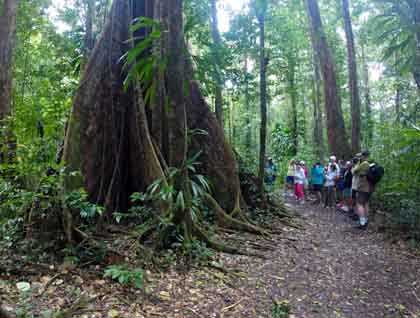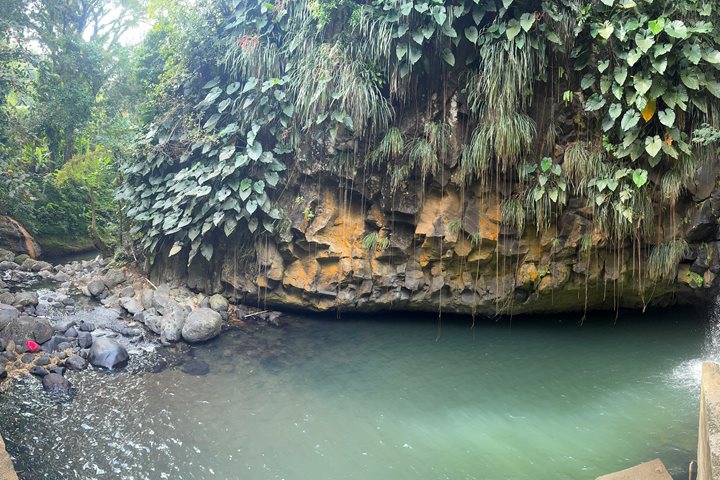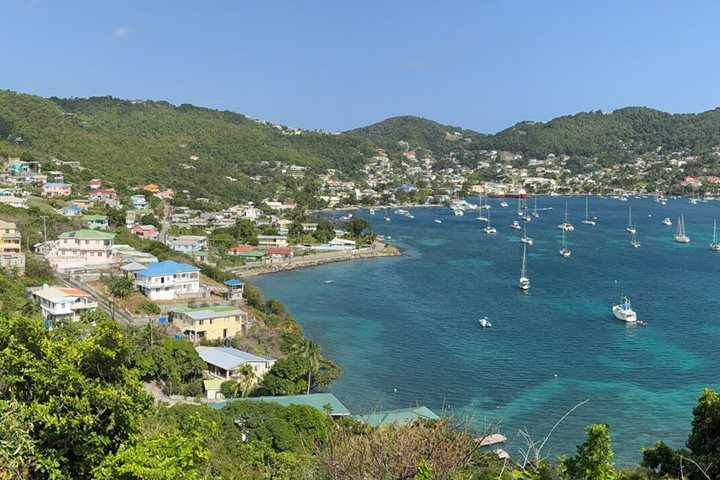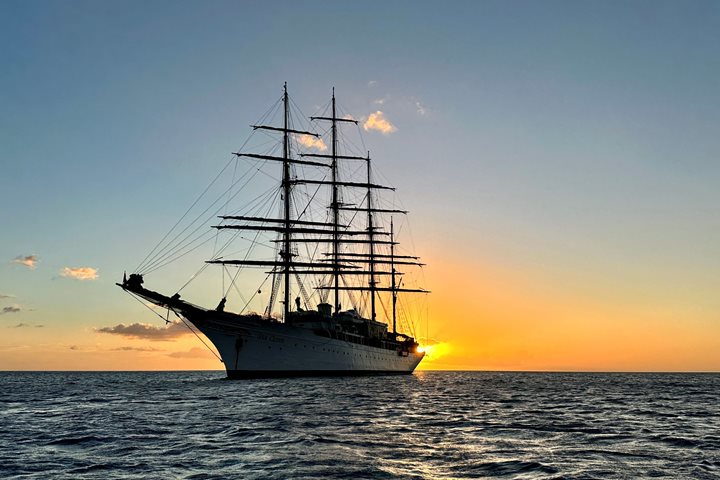As we motored into the idyllic Prince Rupert Bay, Morne Diaboltin was shrouded in rain clouds and a light mist was falling. Morne Diaboltin at 4775’ above sea level is the highest mountain in Dominica and the site of our impending visit. We docked at Cabrits point at 7:03 a.m. Once in the small mini-vans we began the scenic drive to the rainforest national park. This tropical rainforest receives approximately 30’ of rain per year and the lush vibrant green of the forest is a testimony to that. Once in the National Park we divided into three groups. We were hoping to see the elusive endemic parrots of Dominica, the Jacko and the Cicero. We were lucky and despite the roar of the wind blowing through the trees we did see a Jacko. Our guide Honoréis, a genius at mimicking the calls of the birds, was able to call some of the birds to where we were. I have never before seen anyone who is so able to mimic the call of so many species of birds. We also saw the shy Zandolin lizard on our track through the rainforest. The names of the trees in the rainforest are given in their botanical name and in the local patois. The Kriol names are an education in themselves. Here is one of my favorites for descriptiveness -- the infamous “Bwa KaKa” whose wood is used for shingle roofing. The Kriol spelling of the French “bois” for wood is “bwa” and “kaka” identifies the rather noxious smell of the tree on cutting. On our return to the ship a number of us were dropped off in Portsmouth and walked through the wonderful farmer’s market. The Bloodgoods and I purchased and ate a wonderfully fresh and sweet pineapple.
After a great lunch of a genuine Caribbean specialty of fried flying fish, we visited the 18th century British Fort Shirley. I gave a brief overview of Cabrits point and of Fort Shirley in the visitor center. The fort was begun in 1774 and largely completed by 1778 and it was built entirely by local slave labor. The fort is massive and spreads across most of the 200 acres of the Cabrits’ headland. It has only been possible to recover a small part of the original. Strangler vines and jungle cover the rest of the compound. The fort never saw action and existed principally as a deterrent against the French. It was designed by the 18th century American architect William Harrison to protect the Royal Navy at anchor in Prince Rupert Bay. The fort’s canons could sweep the entire area in front of the town of Portsmouth. There was another battery across the Bay and the two batteries made the bay inviolate. At its zenith the fort had 700 enlisted men and a contingent of the 8th West Indian Regiment made up of slaves. This latter regiment rose up in rebellion against the harsh treatment they received at the hands of the Colonial governor Cochrane. The Fort was abandoned in 1852 and lay derelict and in ruin covered by a mass of strangler figs and the jungle. A good friend of mine, Dr. Lennox Honeychurch, a native of Dominica, undertook restoration beginning in 1982 and is still working on the restoration. I think we would all agree that he has accomplished miracles.
After our visit to the Fort we were hot; nothing sounded better than a dip in the sea. I think most of us went snorkeling. The snorkeling is very good and we did it right off the dock, literally alongside the Sea Cloud. The sea was filled with a cornucopia of wonderful species of fish -- tangs, grunts, damselfish, parrotfish, and wrasses in abundance. Once aboard, we were greeted with afternoon tea.
Tonight we had dinner on the Lido deck as we anchored in the middle of Prince Rupert Bay. Imagine, here we are floating aboard one of the historic great ships in a tropical bay surrounded by swaying coconut palms enjoying rum punches, champagne and exquisitely prepared food! It is no wonder the citizens of Dominica call it paradise. I knew that I would sleep soundly after this perfect day.









